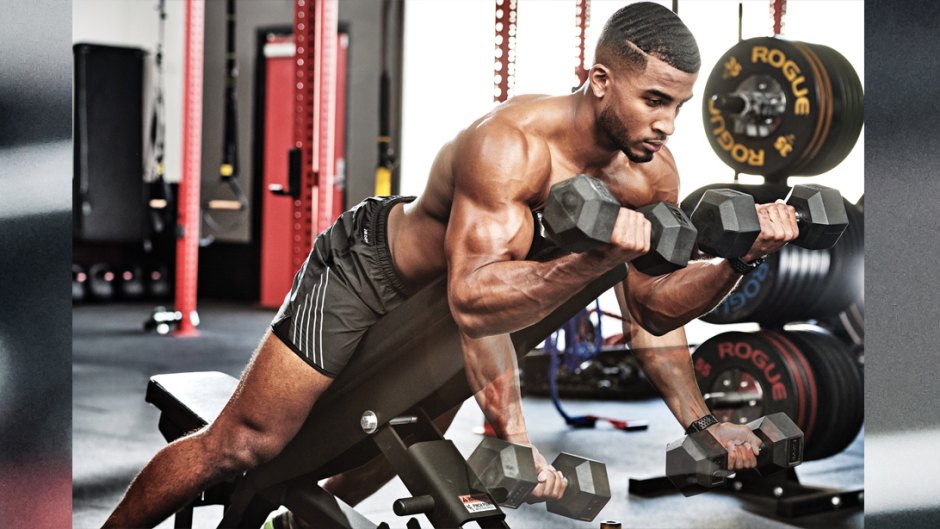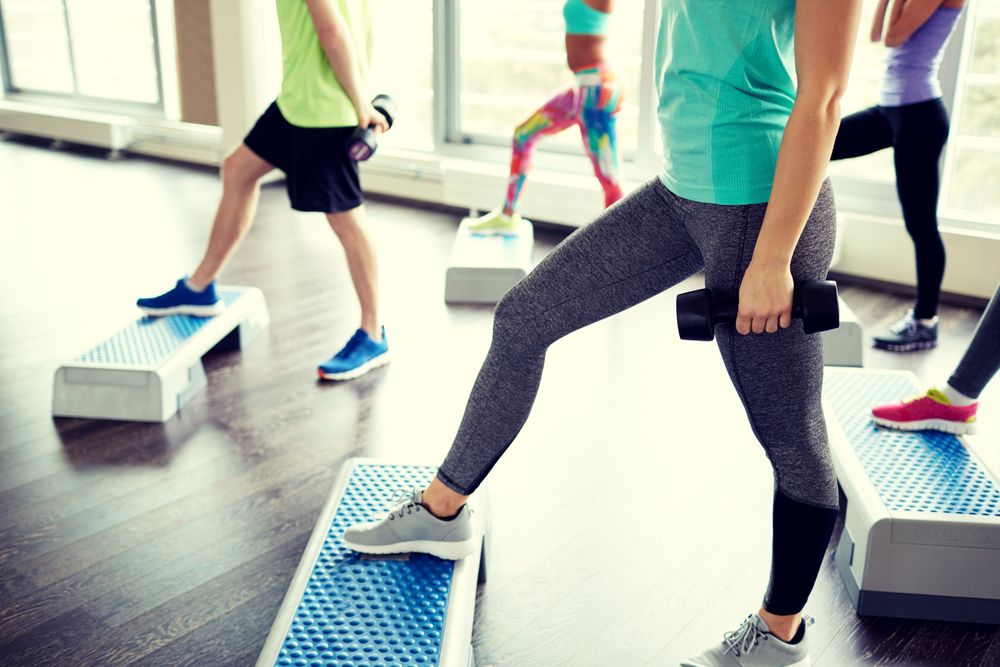These new exercise techniques will change your approach to arm training, not to mention the size of your bis.

Of all the adjectives that describe your biceps, neglected probably isn’t one of them. Seriously, asking you to avoid training arms this week would be like asking the planet to stop spinning. As a group, bodybuilders typically give more attention to arms than any other body part, save for chest. But what should you do if your peaks don’t live up to your goals, or the pump isn’t going according to plan? Since dedication isn’t the issue, it’s time to look at the finer points of arm training, making subtle and effective changes to your arm workouts. With the four-week specialized workout routine outlined here, at least if the world stops turning your arms’ll keep growing.
BETTER BICEPS
Over the next month, we’ll hit your biceps with the utmost intensity while also paying close attention to the small details within each workout. Each week focuses on a particular area or aspect of biceps training. You’ve likely been using some of these exercises from week to week for quite a while, so they may be very familiar. But some moves and training schemes might be totally foreign to you, which is another great reason to tackle these tips. In addition, each week’s workout can be used in consecutive weeks.
Finally, for all exercises, select a weight that allows you to fail within the designated rep range. We also provide an intensity menu, offering several techniques to take your training to the next level. Follow the instructions carefully, and use the intensity techniques on your last few sets where you see the * symbol.
BICEPS ROUTINE
Use the intensity techniques (below) on your last few sets where you see the * symbol.
WEEK 1 (OVERALL MASS FOCUS)
| Exercise | Sets | Reps |
| Seated Barbell Curl (on decline bench) | 4 | 8-12* |
| Straight-Bar Preacher Curl | 4 | 8-12 |
| Incline Dumbbell Curl | 3 | 10-15* |
| Hammer Curl | 3 | 10-15 |
WEEK 2 (LONG, OUTER HEAD FOCUS)
| Exercise | Sets | Reps |
| Close-Grip Barbell Curl | 5 | 6-15* |
| Incline Cable Curl | 4 | 8-10 |
| Seated Alternating Dumbbell Curl | 4 | 12-15 |
| Reverse Curl | 4 | 10-15 |
WEEK 3 (SHORT, INNER HEAD FOCUS)
| Exercise | Sets | Reps |
| Kneeling Incline Cable Curl | 5 | 15 |
| Standing One-Arm Dumbbell Preacher Curl | 4 | 12* |
| Wide-Grip Barbell Curl | 3 | 12 |
| Cable Hammer Cur | 2 | 15* |
WEEK 4 (SEPARATION FOCUS)
| Exercise | Sets | Reps |
| Lying Cable Curl | 5 | 15-20 |
| Preacher Curl | 4 | 15 |
| Zottman Curl | 4 | 15-20 |
| 4-Part Wall Curl | 1 | 100 ** |
*Choose one intensity technique per exercise and use it on only the last set.
** As you’ll see on page 112, the 4-Part Wall Curl puts you in a stronger position with each step back. However, if necessary have lighter weights close by to fulfill the 100-rep set.
INTENSITY MENU
Use these intensity techniques whenever you see the * symbol. Choose one technique for a particular exercise and utilize it on only the last set of that move.
Partial Reps: Perform reps over a partial range of motion – at the top, middle or bottom – of a movement.
Forced Reps: Have a training partner assist you with reps at the end of a set so you can work past the point of momentary muscular failure. Your partner helps lift the weight with only the force necessary for you to keep moving and get past the sticking point.
Drop Sets: After completing your reps in a heavy set, quickly strip an equal amount of weight from each side of the bar, select lighter dumbbells or move the pin up on the stack. Continue repping until you fail, then strip off more weight to complete even more reps.
Rest-Pause: Take brief rest periods during a set to squeeze out more reps. Use a weight you can lift for 5-6 reps (5RM) but do only 2-3 reps, rest as long as 20 seconds, then try for another 2-3 reps. Rest again briefly, then try for as many reps as you can handle, and repeat once more.

INCLINE CABLE CURL
Main benefits: enhances peak, minimizes shoulder strain.
Start
Place an incline bench facing away from a low-pulley cable with a D-handle attached. If your gym has a cable crossover station with adjustable arms, such as FreeMotion, use both arms at once. Grasp the D-handle(s) and sit back against the bench, allowing your arm(s) to be pulled behind you, then lean forward slightly from the waist.
Action
Keeping your elbow(s) fixed in place, curl the handle(s) forward. Squeeze your biceps hard, then slowly return to the start.
Incline Cable Curl in Focus
Placing a stretch on the biceps’ long head while removing delt involvement is another great way to blast the biceps and add height to the peaks. You can do these one or both arms at a time, but either way, lean forward to allow your arms to draw back, which minimizes the delt discomfort common in the standard version. The key is to keep your elbows back as far as possible until you reach failure, then allow your delts to become involved to punch out a few more reps. The right height and angle of the cable will be different for each person, so try a few reps with light weight first.
KNEELING INCLINE CABLE CURL
Main benefit: enhances short-head focus.
Start
Attach a straight bar to a cable set at shoulder level. Sit backwards on an adjustable bench set nearly upright, facing the cable station with either your knees on the bench seat or your feet planted on the floor. Your torso should be fully supported, with your chest against the top of the bench.
Action
Grasp the bar with a shoulder-width grip, allowing your arms to extend in front of you; make sure there’s no slack in the cable at the start. Keeping your elbows in place, curl the bar toward your face, then slowly reverse the motion.
Kneeling Incline Cable Curl in Focus
We’ve talked about the long head or peak of the biceps, but now let’s focus on the inner, short head, since it’s most responsible for how your bi’s look in the mirror. If you lack thickness and size in this inner portion of the biceps, it’s because you’re not giving equal time to moves like preacher curls and high-cable curls. This exercise combines both movements. The incline bench serves as a platform to prevent you from cheating while anchoring you so you can load up the weight. The angle of your arms will lessen the atretch of the biceps’ long head, shifting most of the emphasis to the inner, short head.
LYING CABLE CURL
Main benefit: works through strongest ROM
Start
Attach a straight bar at the seated cable row station. Use a shoulder-width grip and slowly lie back, arms extended, keeping your knees slightly bent and your feet against the platform.
Action
With your elbows pinned at your sides, curl the bar toward your chest. Squeeze your biceps hard at the top, then slowly return. As you fatigue, continue bending your knees so you’re curling through only the top half of the movement.
Lying Cable Curl in Focus
This exercise is an excellent way to isolate the biceps, removing backward sway and momentum, and giving you a pump like no other. You can modify your grip width as you would during a standard barbell curl: A narrow grip hits the long head and a wide grip targets the short head. The advantage of this move is that you can bend your knees as you fatigue, allowing you to focus on the strongest portion of the curl – the top half – and take your biceps training to new levels.
4-PART WALL CURL
Main benefit: isolates biceps peak, enhances muscle endurance
Start
Hold a pair of dumbbells at your sides and lean back against a wall or pole, placing your feet about 3 feet in front of you. Allow your arms to hang straight down toward the floor.
Action
With your eyes focused forward, curl the weights toward your shoulders while keeping your elbows back. After the first 25 reps, shift your feet back about 6 inches. Continue repping until you hit 50 total reps, then move your feet back another 6 inches for another 25 reps. Finish the set with your feet directly underneath you.
4-Part Wall Curl in Focus
This move is all about mechanical advantage while placing added emphasis on the biceps peak by starting in an incline position. It also entirely removes cheating via the wall or the pole, so you’ll have to go lighter than usual. Shooting for 100 reps will fatigue the slow-twitch fibers before attacking the fast-twitch variety, and with every 25 reps you’ll put your body at a mechanical advantage over the previous angle.Topics:


